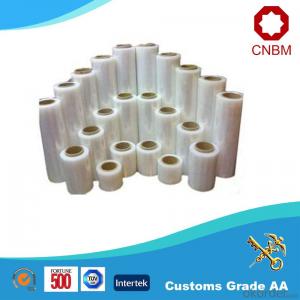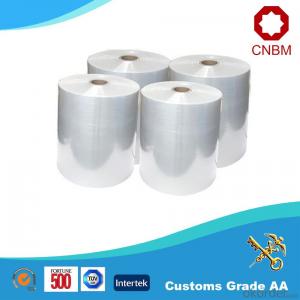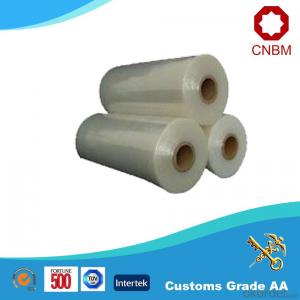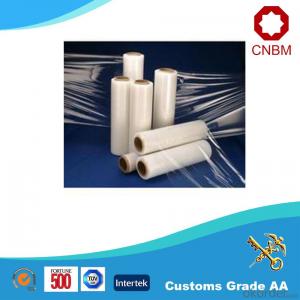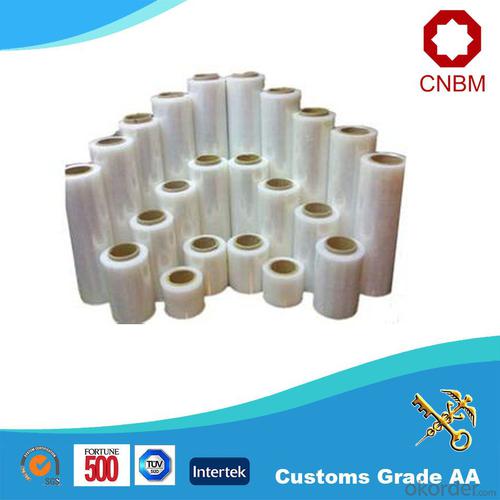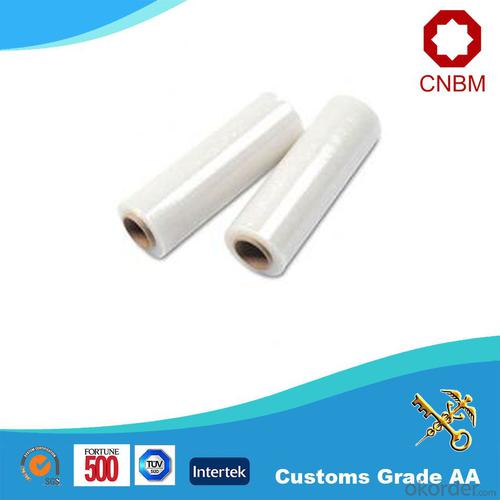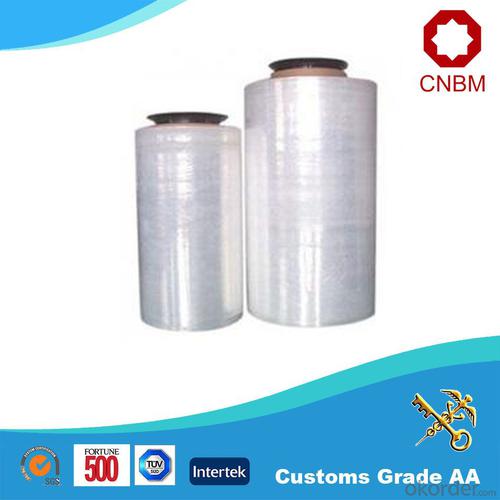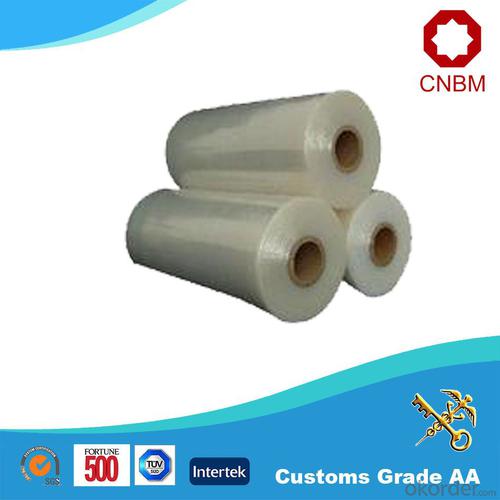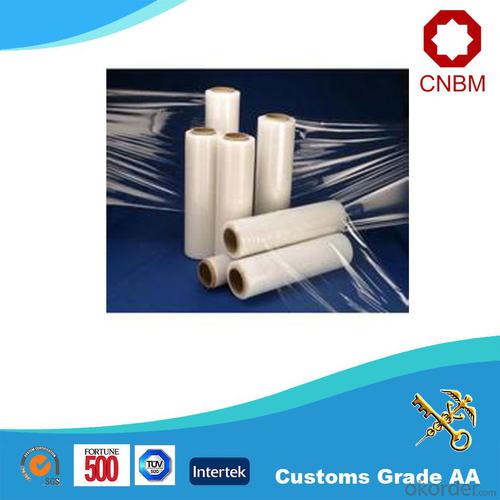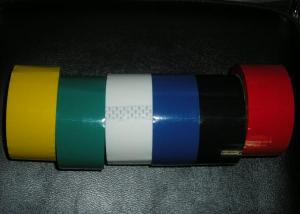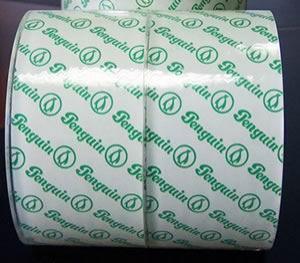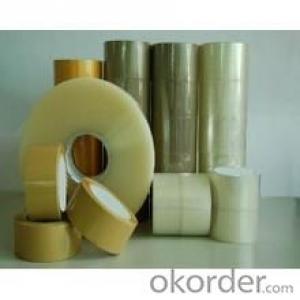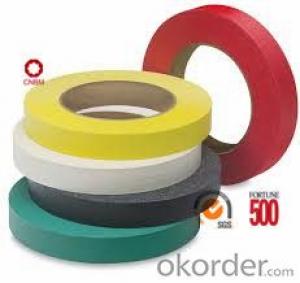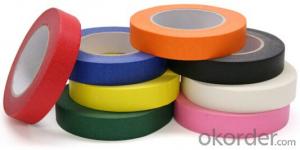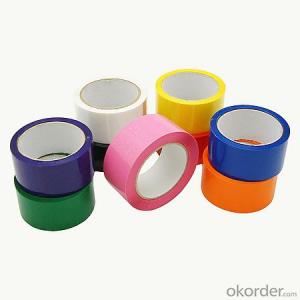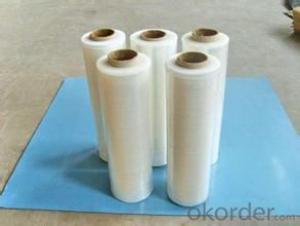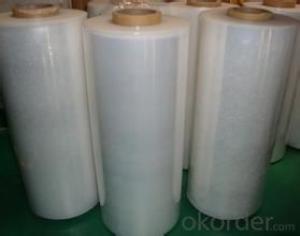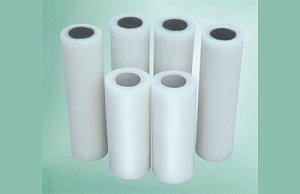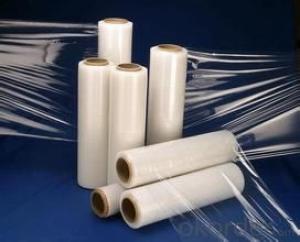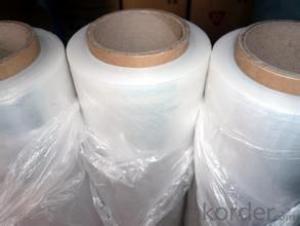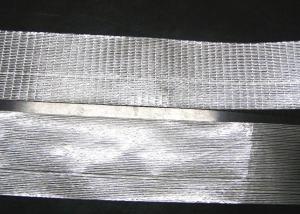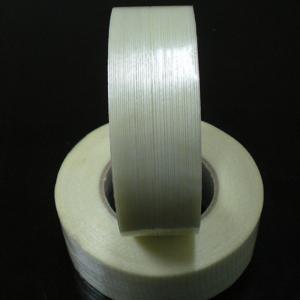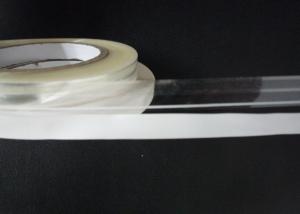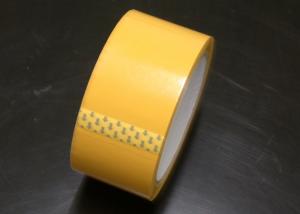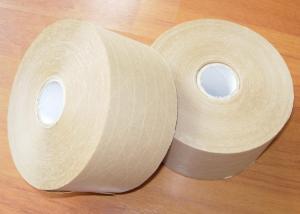Stretch Film Manufacturer LLDPE Pallet Stretch Film
- Loading Port:
- Shanghai
- Payment Terms:
- TT OR LC
- Min Order Qty:
- 1000 m²
- Supply Capability:
- 300000 m²/month
OKorder Service Pledge
OKorder Financial Service
You Might Also Like
Stretch Film Manufacturer LLDPE Pallet Stretch Film
Product Description
Stretch Film is a highly stretchable plastic film that is wrapped around items. The elastic recovery keeps the items tightly bound. In contrast, shrink wrap is applied loosely around an item and shrinks tightly with heat.
It is frequently used to unitize pallet loads but also may be used for bundling smaller items.
FEATURES:
Excellent in adhesion and flame retardant
Resistance to cold, heat and aging.
High Temperature stability
High mechanical strength and good impact resistance
Ideal for use in dispensers
Printable
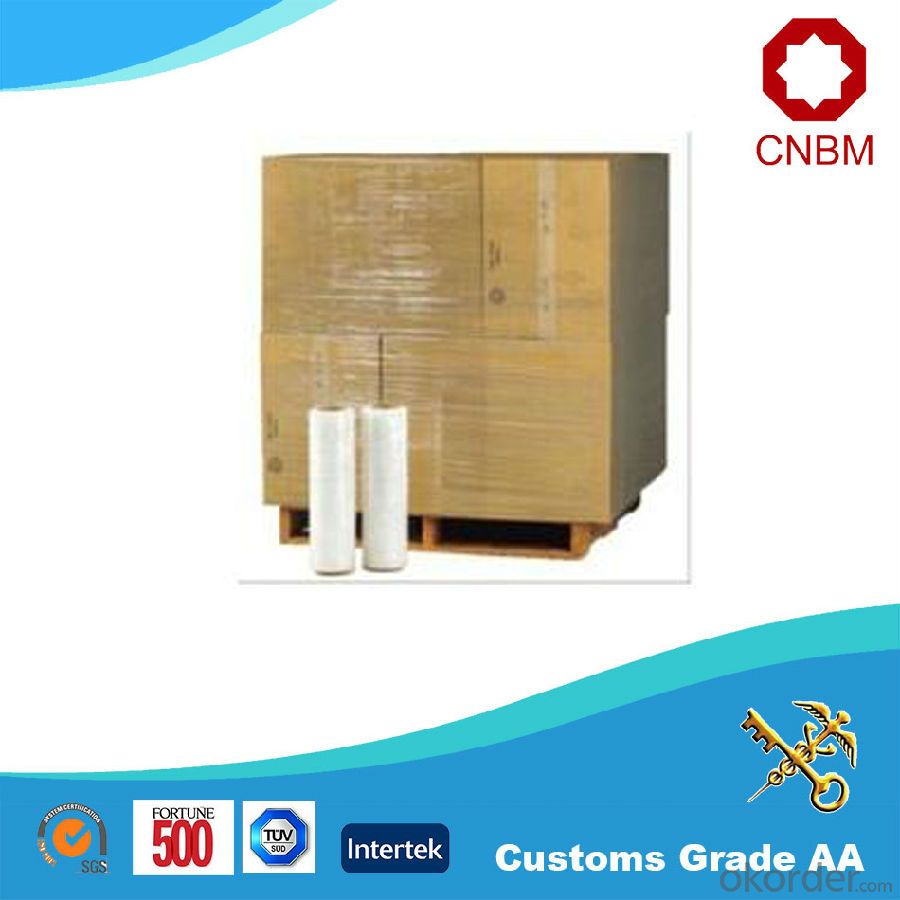
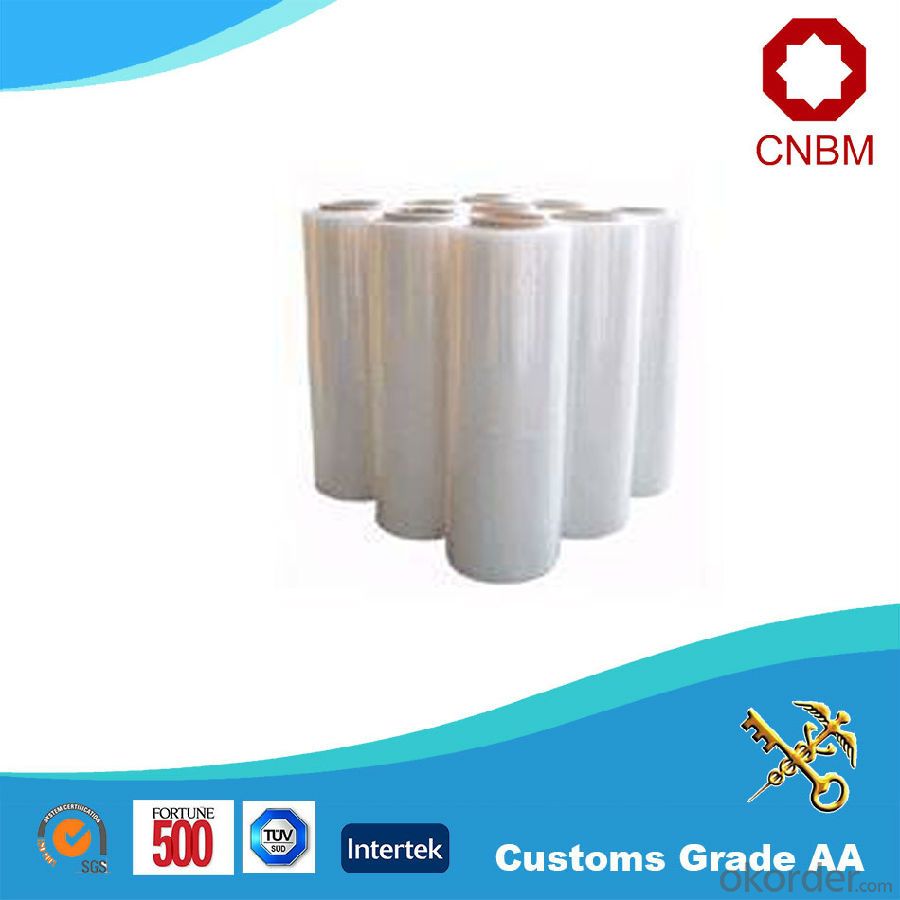
Data Sheet
Width | 100mm-720mm |
Thickness (micron) | 15-35 |
Color | Transparent and Colored |
Angle Tear Strength (N/mm) | 120 |
Tensile Strength (Mpa) | 39 |
Elongation at break (%) | 300,600 |
Impact Ability or Pendulum | 0.15 J/mm |
Tackness (N/cm) | 3 |
Light Transmission Rate (%≥) | 92 |
Frog Density %≤ | 2.5 |
Packing | Carton |
Delivery | With 10-25days after receiving deposit |
Payment | T/T & LC |
Authorized Certificate 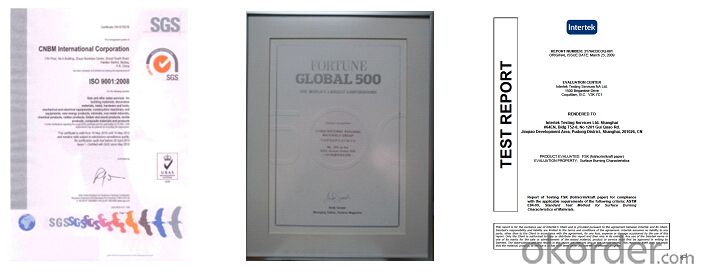
Production Line
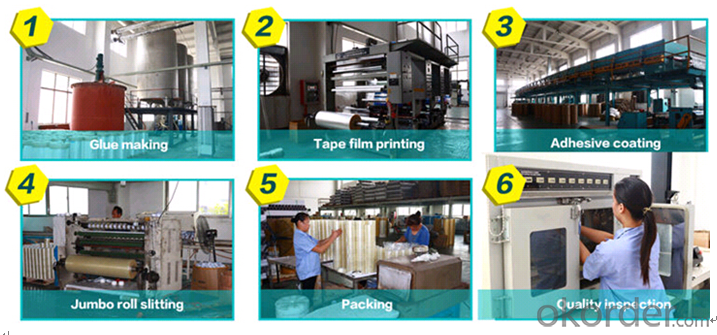
Exhibition Domestic and Oversea

Company
China National Building Materials Group is a state-owned company. As World Top 500 companies, we have clients from over 160 countries and wholly-owned overseas subsidiaries and branches in 10 countries. We supply adhesive tape for over 20 years.
We supply various strech film. All our products have been SGS and ISO9001 certified and exported with Grade AA approval. The quality and performance all meet the advanced international levels.
FAQ
1. Why choose us?
20 Years Experience USD1.6 billion yearly sales
World Top 500 Enterprise
OEM service, supported by strong R&D team
A short lead time
Quality guarantee with third party certification
One-step service: transportation, capital etc.
2. What can we do for you?
Professional consultation on your local market
Custom-made advices for your need
Free samples of masking tape
Your inquiry will be replied within 12 hours.
24 hours service for you
Well-trained & experienced sales representative are ready to answer you.
Satisfactory sales service
3. Delivery time
7-25 days after receiving the deposit
4. Packing and Shipping
36 Rolls per Caron.
5. What is other specifications of adhesive tapes?
Bopp Tape: widely used for carton sealing and packaging, light duty packaging, bounding, holding and other office and household use.
PVC Electrical Tape: widely used for insulating, protection and color coding of electrical wires; may also be used as harness tape in automotive industry.
Cloth Tape: widely used for pipe wrapping, gaffers and book binding etc.
- Q: Does packaging tape have a specific weight capacity?
- Packaging tape indeed possesses a specific weight capacity. The weight capacity of packaging tape relies on its thickness, width, and overall quality. Typically, packaging tapes are engineered to effectively seal boxes and packages, with their weight capacity determined by their adhesive strength and resilience. The majority of standard packaging tapes can handle a weight capacity ranging from approximately 20 to 30 pounds. Nonetheless, there are heavy-duty packaging tapes available that can manage weights of 50 pounds or more. It is crucial to take into account the weight of the package or box that requires sealing and opt for a packaging tape that can accommodate the precise weight capacity in order to ensure a secure and dependable seal.
- Q: Is packaging tape easy to tear by hand?
- Packaging tape is usually quite simple to tear by hand. Many packaging tapes have a serrated edge or perforation, enabling effortless tearing to achieve the desired length, eliminating the need for scissors or additional tools. This characteristic facilitates swift and convenient packaging and sealing of boxes or packages, without any complications. Nonetheless, it is crucial to acknowledge that the ease of tearing may differ based on the brand and quality of the packaging tape.
- Q: Is packaging tape safe to use on plastic cutting mats?
- Packaging tape is generally safe to use on plastic cutting mats, but it is important to consider a few factors before using it. Firstly, ensure that the plastic cutting mat is made of a durable and food-safe material. Some low-quality plastic cutting mats may be prone to scratching or tearing when adhesive tape is applied, so it is advisable to check the manufacturer's recommendations or guidelines. Secondly, consider the purpose of using packaging tape on the cutting mat. If it is for temporary storage or transportation, packaging tape can be suitable as it provides a secure seal. However, if the tape will be in direct contact with food or used during food preparation, it is recommended to avoid using packaging tape. Adhesive residues from the tape may transfer onto the food or contaminate the cutting surface, which could pose a health risk. In such cases, it is better to use food-grade or specialized tape that is specifically designed for use with cutting mats or food preparation surfaces. In conclusion, while packaging tape can be safe to use on plastic cutting mats, it is crucial to consider the quality of the cutting mat, the purpose of using the tape, and potential food safety concerns. Always prioritize the safety and hygiene of your food preparation surfaces when choosing the appropriate tape.
- Q: How do I prevent packaging tape from becoming too sticky?
- To avoid packaging tape becoming excessively sticky, there are several precautions you can take: 1. Keep the tape in a cool and dry location: Excessive heat and humidity often lead to the adhesive on packaging tape becoming stickier. It is important to store the tape in a cool and dry environment to maintain its proper consistency. 2. Prevent contact with dust and debris: Dust and debris easily adhere to the adhesive side of the tape, increasing its stickiness. Keep the tape away from dusty surfaces and ensure that the areas where you plan to apply the tape are clean and free from loose particles. 3. Utilize a tape dispenser: A tape dispenser aids in controlling the amount of tape you use and prevents excessive stickiness. It allows for a more precise application, ensuring that you do not use more tape than necessary. 4. Avoid excessive stretching of the tape: Stretching the tape excessively while applying it can cause it to become stickier. Apply the tape smoothly without pulling or stretching it too much, as this can activate the adhesive further. 5. Consider using low-tack or removable tape: If you frequently encounter problems with sticky packaging tape, you may consider using low-tack or removable tape. These types of tape have less aggressive adhesive properties and are easier to remove without leaving sticky residue. By following these guidelines, you can maintain the desired level of stickiness on your packaging tape and streamline your packaging process.
- Q: Is packaging tape safe to use on plastic cutting boards?
- Yes, packaging tape is safe to use on plastic cutting boards. It provides a secure and durable sealing solution that effectively holds the plastic cutting boards together.
- Q: What are the alternatives to packaging tape?
- There are numerous options available for securing packages or boxes instead of using packaging tape. Some of the popular choices are as follows: 1. Duct Tape: Known for its durability and ability to adhere to different surfaces, duct tape is a robust adhesive tape that serves as a viable alternative to packaging tape. 2. Masking Tape: Unlike packaging tape, masking tape possesses a lower level of stickiness. It is commonly utilized in painting or crafting projects, but can also be employed for securing packages. 3. String or Twine: A package can be secured by wrapping string or twine around the box and tying it tightly. This method is often used for packages that do not require a strong adhesive. 4. Packaging Straps: Made from plastic or polyester, packaging straps can be tightly fastened around the box to ensure secure packaging. They provide a reliable and sturdy alternative to packaging tape. 5. Adhesive Glue: For smaller packages or envelopes, adhesive glue can be used instead of packaging tape. It is crucial to select a strong glue that will securely seal the package. 6. Paper or Kraft Tape: Water-activated paper or kraft tape is commonly employed for sealing packages. The adhesive is activated by wetting the tape, resulting in a strong and secure seal. 7. Zip Ties: Zip ties, which are plastic ties, are often used for securely fastening large or heavy packages by tightly encircling the box. To determine the most suitable alternative to packaging tape, it is vital to assess the specific requirements of the package, including its size, weight, and handling needs.
- Q: Can packaging tape be used for sealing packages with sharp edges or corners?
- Yes, packaging tape can be used for sealing packages with sharp edges or corners. Its strong adhesive properties and durability make it suitable for securing boxes and ensuring that the package remains intact, even when subjected to sharp edges or corners.
- Q: How do I prevent packaging tape from becoming too loose?
- Here are some helpful suggestions for preventing packaging tape from becoming loose: 1. Opt for high-quality packaging tape: Invest in packaging tape that boasts a strong adhesive. Inferior quality tapes tend to lose their stickiness quickly, resulting in loose packaging. 2. Ensure cleanliness and dryness of surfaces: Prior to applying the tape, make sure that the surfaces are clean and dry. Dust, moisture, or oil can weaken the adhesive and cause the tape to loosen. 3. Apply firm pressure: When sealing a package, exert firm pressure while affixing the tape onto the surface. Be sure to run your hand or a flat object along the length of the tape to ensure proper adhesion. 4. Utilize overlapping tape: Instead of using only a single strip of tape, overlap it by a few inches. This overlapping technique provides added strength and diminishes the likelihood of the tape becoming loose. 5. Avoid extreme temperature fluctuations: Extreme temperature changes can adversely affect the adhesive properties of packaging tape. Refrain from storing packages in areas with high humidity or extreme temperature variations, as this can cause the tape to loosen. 6. Strengthen with extra tape: If you are sealing a heavy or bulky package, contemplate reinforcing it with additional tape. Apply extra strips of tape across the sides or diagonally to provide supplementary support and minimize the risk of the tape coming loose. 7. Properly store packages: When storing packages, ensure they are stacked correctly and not subjected to excessive pressure or weight. Inadequate storage conditions can cause the tape to loosen over time. By adhering to these recommendations, you can effectively prevent packaging tape from becoming too loose, thereby guaranteeing that your packages remain securely sealed during transit or storage.
- Q: What are the benefits of using tamper-evident packaging tape?
- Tamper-evident packaging tape offers several benefits for businesses and individuals alike. Firstly, it provides an additional layer of security by clearly indicating if a package has been tampered with. This helps to prevent theft, unauthorized access, or tampering of valuable or sensitive items during transit or storage. Furthermore, tamper-evident packaging tape enhances the trust and credibility of a business. By using such tape, companies can assure their customers that their products have not been tampered with and are delivered in their original state. This is particularly important for industries such as pharmaceuticals, food, and electronics, where ensuring product safety and integrity is crucial. Moreover, tamper-evident packaging tape also serves as a deterrent for potential tampering. The clear and visible markings on the tape act as a warning to would-be thieves or unauthorized individuals, discouraging them from attempting to tamper with packages. Another advantage is the ease of use and convenience that tamper-evident packaging tape offers. It can be applied quickly and easily to packages of various sizes and shapes, providing a reliable sealing solution that is resistant to tampering attempts. Additionally, the tape is usually designed to leave behind clear evidence of tampering, making it easy to detect if a package has been compromised. Lastly, using tamper-evident packaging tape can help businesses comply with regulatory requirements. Many industries have specific guidelines and regulations in place regarding product safety and security. By utilizing tamper-evident tape, companies can demonstrate their commitment to meeting these standards and ensure the integrity of their products throughout the supply chain. Overall, the benefits of using tamper-evident packaging tape include enhanced security, increased trust, deterrence of tampering, ease of use, and regulatory compliance. By investing in this simple yet effective sealing solution, businesses and individuals can protect their packages, ensure product integrity, and provide peace of mind to customers.
- Q: How does packaging tape compare to duct tape in terms of strength and durability?
- Packaging tape and duct tape display notable disparities in terms of strength and durability. Packaging tape primarily serves the purpose of sealing boxes and securing lightweight packages, rendering it appropriate for general household use or tasks that involve low levels of exertion. It typically possesses a lower tensile strength and may be more susceptible to tearing or breaking when exposed to substantial stress or weight. Conversely, duct tape possesses a well-established reputation for its remarkable strength and durability. It is precisely engineered to provide a sturdy and long-lasting grip, making it the preferred choice for demanding tasks and repairs requiring a robust adhesive. Duct tape is composed of a resilient woven fabric backing coated with a durable adhesive, resulting in a tape capable of enduring high levels of tension and resisting tearing or breaking even in extreme conditions. While packaging tape is designed for temporary applications, duct tape is commonly employed in more strenuous and enduring projects, such as mending or fortifying items, bundling heavy objects, or even constructing provisional structures. Its versatility and superior strength make it a dependable option in situations where durability and resilience are of paramount importance. To summarize, packaging tape and duct tape diverge in their intended uses and capabilities. Packaging tape is suitable for lightweight applications and the sealing of boxes, whereas duct tape excels in heavy-duty tasks and offers outstanding strength and durability.
Send your message to us
Stretch Film Manufacturer LLDPE Pallet Stretch Film
- Loading Port:
- Shanghai
- Payment Terms:
- TT OR LC
- Min Order Qty:
- 1000 m²
- Supply Capability:
- 300000 m²/month
OKorder Service Pledge
OKorder Financial Service
Similar products
Hot products
Hot Searches
Related keywords
